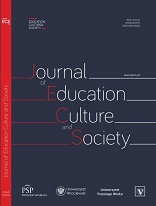Psycho-semiotic model of thinking. Combining Klein and Peirce theory of symbol for more comprehensive model of mind
Psycho-semiotic model of thinking. Combining Klein and Peirce theory of symbol for more comprehensive model of mind
Author(s): Marta IwaszukSubject(s): Psychology, Sociology
Published by: Fundacja Pro Scientia Publica
Keywords: Psychoanalysis; Semiotics; Melanie Klein; Charles s. Peirce; Symbol
Summary/Abstract: Thesis: Aim of the paper is to present Melanie Klein and Charles S. Peirce concept of symbol in order to combine them into scheme that presents conscious and unconscious aspect of thinking through symbolic signs (signs based on convention). Presented concepts: Paper presents concept of symbol in psychoanalytical and semiotic perspective. Psychoanalytical view is based on interpretation of symbol according to object relation paradigm proposed by Klein. There are two reasons for selecting her theory for the model: it is most closely bound with interdependency between communication and thinking plus her concept of proper symbol fulfills definition of symbolic sign in Peirce theory, due to deployment of matter of absence in substitution process. Peirce theory however is selected to present semiotic perspective not only for its good linkage to Klein’s “proper symbol” but also for its accurate understating of object representation in quasi- mind through Representamen and as a result recognition of symbol embedment in code through unlimited semiosis. Chosen concepts are consolidated into psycho-semiotic model of thinking which recognizes symbol to be co-created by unique internal world of unconscious phantasy with simultaneous employment of semiotic devices oriented to external, group order perspective. Results and conclusions: Proposed psycho-semiotic model of thinking enhances psychoanalytic view, based on drive for object, by recognizing communication means required for meaningful relation and with that for thinking itself. As a result conceptualizing thinking processes is enriched with semiotic discoveries such as mechanics and structure of Representamen and Interpretant, along with indispensable code rules, with unlimited semiosis at its core. In turn psychoanalytical view adds to semiotic perspective sensitivity to individual potential and constrains when code is in use and with that raises precision of exploration in the field.
Journal: The Journal of Education, Culture, and Society
- Issue Year: 10/2019
- Issue No: 1
- Page Range: 51-67
- Page Count: 17
- Language: English

